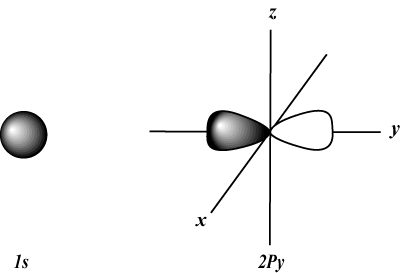Please wait while we process your payment
If you don't see it, please check your spam folder. Sometimes it can end up there.
If you don't see it, please check your spam folder. Sometimes it can end up there.
Please wait while we process your payment

By signing up you agree to our terms and privacy policy.
Don’t have an account? Subscribe now
Create Your Account
Sign up for your FREE 7-day trial
By signing up you agree to our terms and privacy policy.
Already have an account? Log in
Your Email
Choose Your Plan
Individual
Group Discount
Save over 50% with a SparkNotes PLUS Annual Plan!
 payment page
payment page
Purchasing SparkNotes PLUS for a group?
Get Annual Plans at a discount when you buy 2 or more!
Price
$24.99 $18.74 /subscription + tax
Subtotal $37.48 + tax
Save 25% on 2-49 accounts
Save 30% on 50-99 accounts
Want 100 or more? Contact us for a customized plan.
 payment page
payment page
Your Plan
Payment Details
Payment Summary
SparkNotes Plus
You'll be billed after your free trial ends.
7-Day Free Trial
Not Applicable
Renews July 18, 2025 July 11, 2025
Discounts (applied to next billing)
DUE NOW
US $0.00
SNPLUSROCKS20 | 20% Discount
This is not a valid promo code.
Discount Code (one code per order)
SparkNotes PLUS Annual Plan - Group Discount
Qty: 00
SparkNotes Plus subscription is $4.99/month or $24.99/year as selected above. The free trial period is the first 7 days of your subscription. TO CANCEL YOUR SUBSCRIPTION AND AVOID BEING CHARGED, YOU MUST CANCEL BEFORE THE END OF THE FREE TRIAL PERIOD. You may cancel your subscription on your Subscription and Billing page or contact Customer Support at custserv@bn.com. Your subscription will continue automatically once the free trial period is over. Free trial is available to new customers only.
Choose Your Plan
This site is protected by reCAPTCHA and the Google Privacy Policy and Terms of Service apply.
For the next 7 days, you'll have access to awesome PLUS stuff like AP English test prep, No Fear Shakespeare translations and audio, a note-taking tool, personalized dashboard, & much more!
You’ve successfully purchased a group discount. Your group members can use the joining link below to redeem their group membership. You'll also receive an email with the link.
Members will be prompted to log in or create an account to redeem their group membership.
Thanks for creating a SparkNotes account! Continue to start your free trial.
We're sorry, we could not create your account. SparkNotes PLUS is not available in your country. See what countries we’re in.
There was an error creating your account. Please check your payment details and try again.
Please wait while we process your payment

Your PLUS subscription has expired
Please wait while we process your payment
Please wait while we process your payment

Atoms and Atomic Orbitals
This chapter is intended as a review of concepts covered in more depth in general chemistry from the organic chemist's point of view. Bear in mind that many of the topics here are emphasized with an organic bent.
An atom consists of a nucleus of protons and neutrons surrounded by electrons. Each of the elements in the periodic table is classified according to its atomic number, which is the number of protons in that element's nucleus. Protons have a charge of +1, electrons have a charge of -1, and neutrons have no charge. Electrically, neutral atoms have the same number of electrons and protons, but they can have a varying number of neutrons. Within a given element, atoms with different numbers of neutrons are isotopes of that element. We will see that isotopes typically exhibit similar chemical behavior to each other.
Electrons have such little mass that they exhibit properties of both particles and waves. We know from Heisenberg's Uncertainty Principle that it is impossible to know the precise location of an electron. Despite this limitation, there are regions around the atom where the electron has a high probability of being found. Such regions are referred to as orbitals.
For isolated atoms (meaning non-bonded), electrons reside in the atomic orbitals of those atoms. Atomic orbitals are classified according to a set of four quantum numbers which describe the energy, shape, and orientation of the orbital.
Principle Quantum Number (n): Indicates how far the orbital is
from the nucleus. Electrons are farther away for higher values of n. By
Coulomb's Law we know that electrons which are closer to
the positively charged nucleus are more powerfully attracted and thus have lower
potential energies. Electrons of orbitals with higher values of n, being
farther away from the
nucleus, have greater potential energies. In a given atom, all the
atomic orbitals with the same n are collectively known as a shell.
n
can take on integer values of 1 or higher (ex. 1, 2, 3, etc.).
Angular Momentum Quantum Number (l): Describes the shape of the
orbital. The angular momentum number (or subshell) can be represented
either by number (any integer from 0 up n-1) or by a letter (s, p, d, f, g,
and then up the alphabet), with 0 = s, 1 = p, 2 = d, and so on. For
example:
when n = 1, l can only equal 0; meaning that shell n = 1
has only an s orbital (l = 0).
when n = 3, l can equal 0, 1, or 2; meaning that shell n =
3 has s, p, and d orbitals.
s orbitals are spherical, whereas p orbitals are dumbbell-shaped. d
orbitals and beyond are much harder to visually represent.

Please wait while we process your payment

